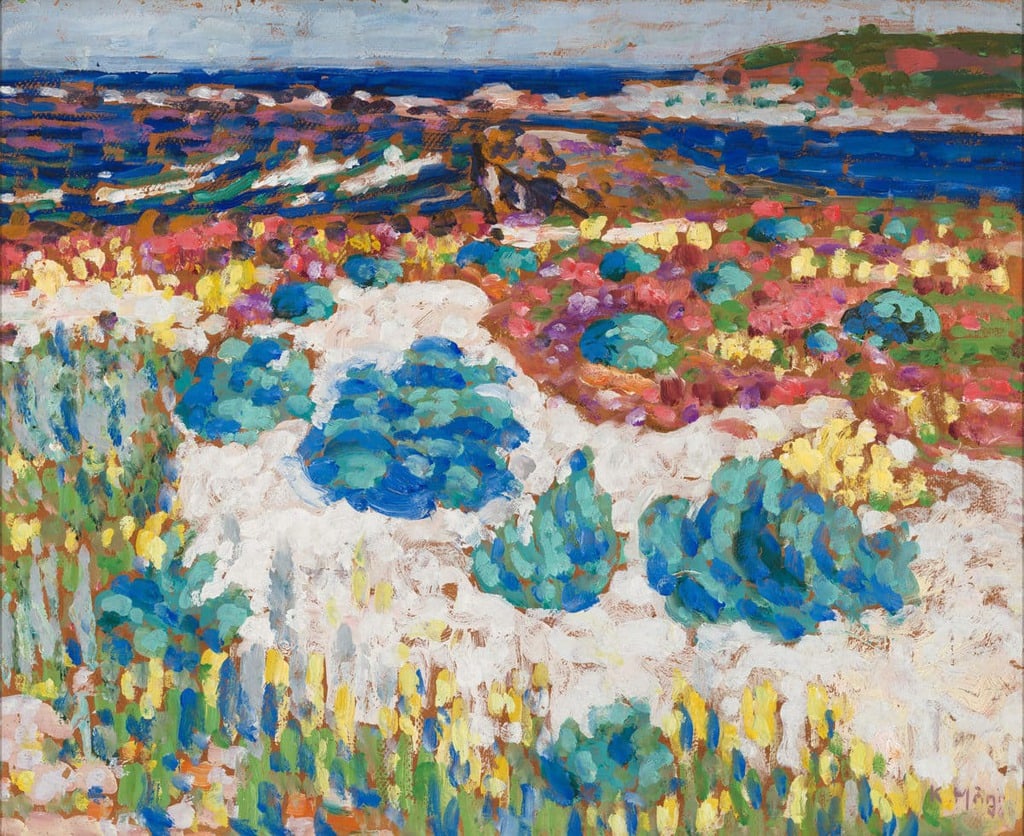
This painting that was apparently completed on Vilsandi or in Kihelkonna stands out with its exceptional power of colour. Drawing inspiration from nature along the coast, Mägi makes the colours in his painting even more intense. This is not at all for decorative reasons since the energy charge of colour was evidently a means for Mägi to convey tensions and energy prevailing in nature. Mägi was not a reflective painter, meaning that there is no point in seeking intellectual conclusions about the world from his oeuvre. When looking at, say, the twisting clumps of sea cale or the rock drenched in patches of colour in Saaremaa. Etüüd [Saaremaa. A Study], it is difficult to interpret it as the artist’s attempt to rhetorically say something about the world. Painting is more likely a means for Konrad Mägi for how to cope with his own existential quests and yearnings. This can also be referred to as egoistic painting, where everything starts with what is taking place in the artist’s inner world, and where contact with the external world causes an emotional explosion, which ultimately also makes its way into the painting in the form of hundreds of patches of intense colour. On the other hand, this painting does not establish one narrow, subjective view of the world since it is too charged for this. We are not simply looking at one artist’s self-expression, but rather at his surprise and implacability. It is as if Saaremaa. Etüüd were discovering the world for the first time with its dense language of brushstrokes, dozens of modifications of forms and colours, and by wrecking perspective. By looking at the world in surprise, it shows us the conventional, and thereby subjective, nature of everything.
In the case of this painting, it should be remembered to what extent this painting could have appeared to be extraordinary in the mid-1910’s when the public, which was just then getting a feel for their first works of art, as well as a large proportion of artists thought of “nature paintings” as either dry, realistic puttering or romantic enjoyment of beauty but definitely not as vigorous and distinctive colour orientation. Even though most of the members of Mägi’s generation were of peasant origin or at least closely associated with rural life in their childhood – even Mägi’s own father was a former school teacher and steward of a manor – they did not approach nature sentimentally but rather from a modernistic point of view. Interacting with nature had already become somewhat ritualistic for them. After living in metropolises abroad, they still sought inspiration as before from landscapes but it was not so much the wish to convey the beauty of nature that brought them there but rather the will to apply the methods of modern art and their own state of mind to elements found in nature. It is interesting to observe that the generations that followed them did not carry this trend further towards an even more urban approach but rather became to a great extent so called “pure” painters of nature in the 1920’s and 1930’s.
This work belonged to the linguist and academician Paul Ariste according to the data in an exhibition catalogue from 1969. It is known that his art collection was formed before the Second World War already when Ariste was only in his thirties.